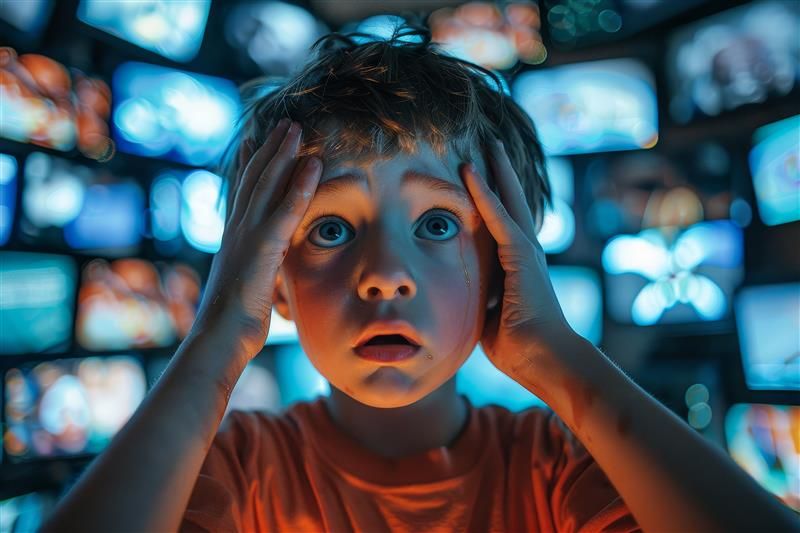digital parentingscreen addiction
14.07.2025
Children's Exposure to Screens:Hidden Dangers and What Parents Can Do

In recent years, screens have become omnipresent in children's lives. From phones and tablets to televisions and laptops, access to technology often begins in the first year of life. Young children are exposed at very early ages—sometimes to calm them, other times as a quick distraction during difficult moments for parents. But beyond this seemingly practical solution, research paints an increasingly clear picture: early and excessive screen exposure carries significant risks for a child’s development.
One of the most important studies in this field was conducted by Patricia Kuhl, a specialist in child neuroscience. She demonstrated that babies cannot effectively learn from videos or apps, but only from direct human interaction. In one experiment, six-month-old babies exposed to Mandarin through live conversation with native speakers were able to recognize the language’s sounds. But when the same exposure happened through a screen, the result was null. The conclusion? Human contact is essential. Screens cannot replace voice, facial expression, or authentic interaction.
The World Health Organization (WHO) has issued clear recommendations: children under the age of 2 should not be exposed to screens at all. Even background television is discouraged. Between the ages of 2 and 5, screen time should not exceed one hour per day, and the content must be carefully selected and educational in nature.
The negative effects of screens have been closely studied by neuroscience experts. Children with excessive exposure develop language more slowly, struggle with concentration, have limited social contact, and possess a reduced vocabulary. Imagination, problem-solving skills, and the ability to focus on non-digital stimuli also decline. Recent studies link prolonged screen time with structural changes in the brain, including thinning of the cerebral cortex—the region responsible for critical and rational thinking.
Other serious risks include the onset of ADHD-like symptoms and what specialists call “virtual autism”—a set of behaviors that mimic autism spectrum disorders but are reversible by reducing or eliminating screen time. Warning signs that should alert parents include language delays, avoiding eye contact, repetitive behaviors, or difficulty managing emotions.
What can parents do? First and foremost, avoid screens completely during the first two years of life. Turn off the television when the child is in the room, and create an environment where free play, reading, exploration, and real interactions are readily available. For older children, the one-hour-per-day limit should be strictly enforced, and content must be carefully chosen. Educational apps can be helpful, but only when used together with an adult and for a clearly defined purpose.
Parental control is essential—not just for time management but also to prevent access to inappropriate content, which can accidentally appear due to recommendation algorithms. It's also important for parents to model balanced digital habits. Children imitate. If they see parents constantly connected to screens, they will learn that this is normal behavior.
Encouraging physical activity, outdoor play, interactions with other children, and reading is vital. Children need unstructured time, boredom, and opportunities to explore. That’s where creativity, empathy, and patience are born.
Screens are not the ultimate enemy, but they become a real threat when they replace time with parents, real-world exploration, and authentic learning. An informed parent—aware of these risks and willing to protect their child’s development—can make all the difference. By choosing presence over digital substitutes, we choose a healthier future for our children.


